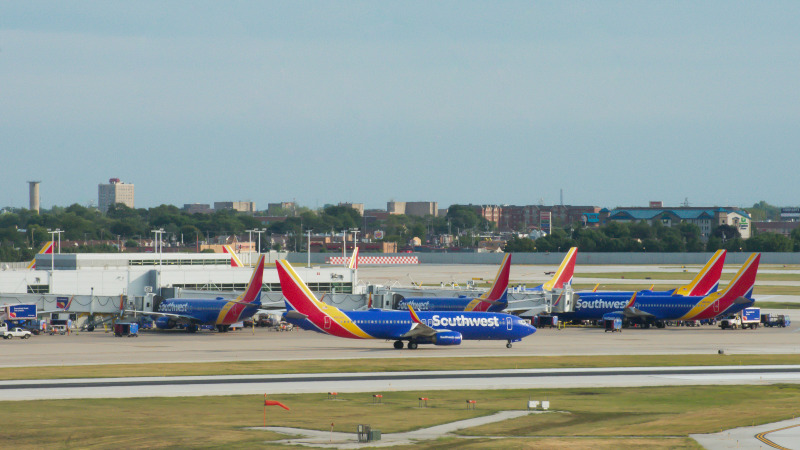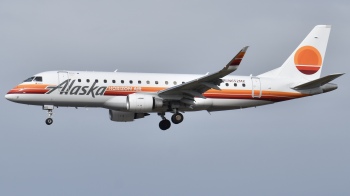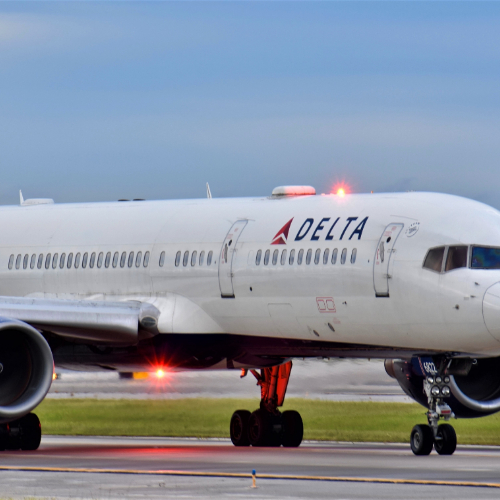Only two days after a pair of Delta jets collided in Atlanta, another potential collision incident occurred in the southeast, this time in Nashville, Tennessee. The incident occurred between an Alaska Airlines 737 and a Southwest 737 as the Alaska jet was beginning its takeoff roll.

What Happened?
Alaska Airlines flight 369 was preparing to depart on a routine flight from Nashville to Seattle, and was cleared to takeoff by Nashville Air Traffic Control around 9:15a.m. local time. At or near the same moment, Southwest 2029 was cleared to cross the same runway that Alaska 369 was departing on by ATC, but near the far end of that same runway.
The Alaska flight recognized the conflict during the roll, and aborted the takeoff at a speed that resulted in the tires of the 737-800 deflating by design, mainly due to the immense heat buildup resulting from a rejected takeoff. The flight then subsequently returned to the gate, and later departed that afternoon on a different 737 for Seattle without incident. Southwest 2029 continued its taxi to a different assigned runway for takeoff, and departed without further incident as well.
No injuries were reported from Alaska 369 after it aborted the takeoff and returned to the terminal, and the 737 involved in the incident was held in Nashville for mechanics to perform an inspection on the airframe.
The Big Problem
While runway incursions happen from time to time, the increasing frequency is becoming an alarming trend across U.S. aviation specifically. With the Delta incident making headlines just days ago, and the many stories over the last 2-3 years of what seems to be frequent ground collisions, one must question if the FAA and worldwide regulators are doing enough to keep what should be a relatively simple concept at bay.
Runway incursions are in fact one of the most dangerous safety hazards in aviation, and history has proven that they can turn deadly in a matter of seconds. Alaska released a statement stating "we're grateful for the expertise of our pilots who immediately applied the brakes to prevent the incident from escalating. Our pilots train for these situations, and they handled the situation expertly."
While the training is definitely a good thing to have, and resulted in the situation being safely dissolved, perhaps it's time for a major intervention, and/or the introduction of new procedures ideas for the future. More training needs to be introduced across airlines not necessarily to cover aborting takeoffs, but to handle runway crossing clearances and ensuring that conflicts can be avoided before they become a problem.
Until then, it seems like things like will just become more frequent, and it is my personal hope that the aviation world takes this seriously sooner rather than later to rectify a alarming trend.
Comments (0)
Add Your Comment
SHARE
TAGS
NEWS SouthwestAlaska AirlinesPlanesNearlyCollideNashvilleAirportCollisionincidentRECENTLY PUBLISHED
 Learjet Owned By Vince Neil Crashes Into Gulfstream Jet, 1 Fatality Confirmed
On February 10th, around 14:30 local time, a Learjet private jet aircraft crashed into another private jet after landing at Scottsdale Airport (SCF) in Arizona.
NEWS
READ MORE »
Learjet Owned By Vince Neil Crashes Into Gulfstream Jet, 1 Fatality Confirmed
On February 10th, around 14:30 local time, a Learjet private jet aircraft crashed into another private jet after landing at Scottsdale Airport (SCF) in Arizona.
NEWS
READ MORE »
 Seattle Plane Strike 2025: Japan Airlines and Delta Collision Raises Safety Concerns
Seattle-Tacoma International Airport saw a concerning incident on Wednesday morning when a Japan Airlines (JAL) plane clipped a parked Delta Air Lines jet while taxiing. Thankfully, no one was injured, but passengers described the collision as a frightening experience.
NEWS
READ MORE »
Seattle Plane Strike 2025: Japan Airlines and Delta Collision Raises Safety Concerns
Seattle-Tacoma International Airport saw a concerning incident on Wednesday morning when a Japan Airlines (JAL) plane clipped a parked Delta Air Lines jet while taxiing. Thankfully, no one was injured, but passengers described the collision as a frightening experience.
NEWS
READ MORE »
 Ethiopian Airlines Expands Cargo Fleet with New Boeing 777 Freighter
Ethiopian Airlines has expanded its cargo fleet with a brand-new Boeing 777 Freighter, registered as ET-BAB (MSN 68140). The aircraft was delivered directly from Boeing’s factory in Everett, Washington, USA, and landed at Addis Ababa Bole International Airport at 3:41 PM (GMT+3) on Wednesday, January 22, 2025.
NEWS
READ MORE »
Ethiopian Airlines Expands Cargo Fleet with New Boeing 777 Freighter
Ethiopian Airlines has expanded its cargo fleet with a brand-new Boeing 777 Freighter, registered as ET-BAB (MSN 68140). The aircraft was delivered directly from Boeing’s factory in Everett, Washington, USA, and landed at Addis Ababa Bole International Airport at 3:41 PM (GMT+3) on Wednesday, January 22, 2025.
NEWS
READ MORE »





